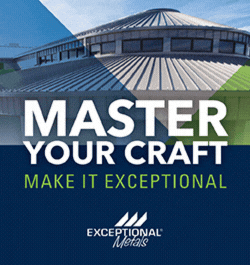Training an Estimator: Four Steps to Success

So you’ve hired a new estimator but they don’t have any experience?
What were you thinking? It was too hard to find someone with experience?
Yes. Often it is hard.
There are advantages and disadvantages to hiring someone with no experience. An advantage is that you have a fresh mind—one that is trainable and can learn your business processes and the way you like to prepare estimates. At the same time, that lack of experience can be a disadvantage because of the ramp-up period and learning curve.
It’s been said that an estimator is the backbone of the company. Strengthening that backbone will take time and patience. (If you have neither, hire someone experienced). However, if you hire someone green, it’s critical to train them well. Here are four steps to start with that will help ensure they are headed in the right direction.
1. Office experience (general)
Have them help out in the office for a few weeks. They could do go-fer work, or assist various departments. You’ll get an idea of their work ethic and how well they handle different personalities. You’ll also learn how fast they grasp procedures and possibly software. If they can’t handle it, cut your losses and find another trainee. If they pass, consider the next step, field experience.
2. Field experience
Put them in the field. Ideally, have them work alongside some of your better field people. Doing the work provides valuable understanding on what is needed to accomplish the overall job. This may not be possible in a union environment, but any field experience is helpful. The length of time spent in the field will vary depending on the complexity of your trade and ability of the trainee. Along with practical estimating knowledge, this will give them a healthy respect for the field personnel and a better understanding of your overall business. If they make it past steps 1 and 2 above, move to step 3.
3. Back to the office - estimating by hand
Pair them up with an experienced estimator and get them started by doing takeoffs by hand. Let them learn the basics in estimating long-hand and show them ways to check their work. Consider sending them to an estimating class at a nearby technical school or college.
This provides the foundation that is needed before taking the next step into computerized estimating. If they don’t know how to check their work by hand, a software program will just help them make mistakes faster.
4. Computerized estimating
Once they can do hand estimates and check their work, they’re ready to try estimating software. If you have a patient, experienced estimator, they can help get your new estimator started. However, further training will likely be needed. If this person has made it this far in your organization, they are probably a keeper. Let them get the proper training, whether online or in person.
The estimating software you are using should offer training and have support available to help the estimator get started and become efficient at using the program. Remember to check over their work. Many good companies make it standard operating procedure to have at least one other pair of eyes reviewing every estimate.
Training a new estimator is challenging at best, but if you find the right person and invest the time and effort into the proper training, it may yield benefits for years to come.
If this person has made it this far in your organization, they are probably a keeper. Let them get the proper training, whether online or in person.
Learn more about Estimating Edge in their RCS directory.
Source: Estimating Edge




















Comments
Leave a Reply
Have an account? Login to leave a comment!
Sign In